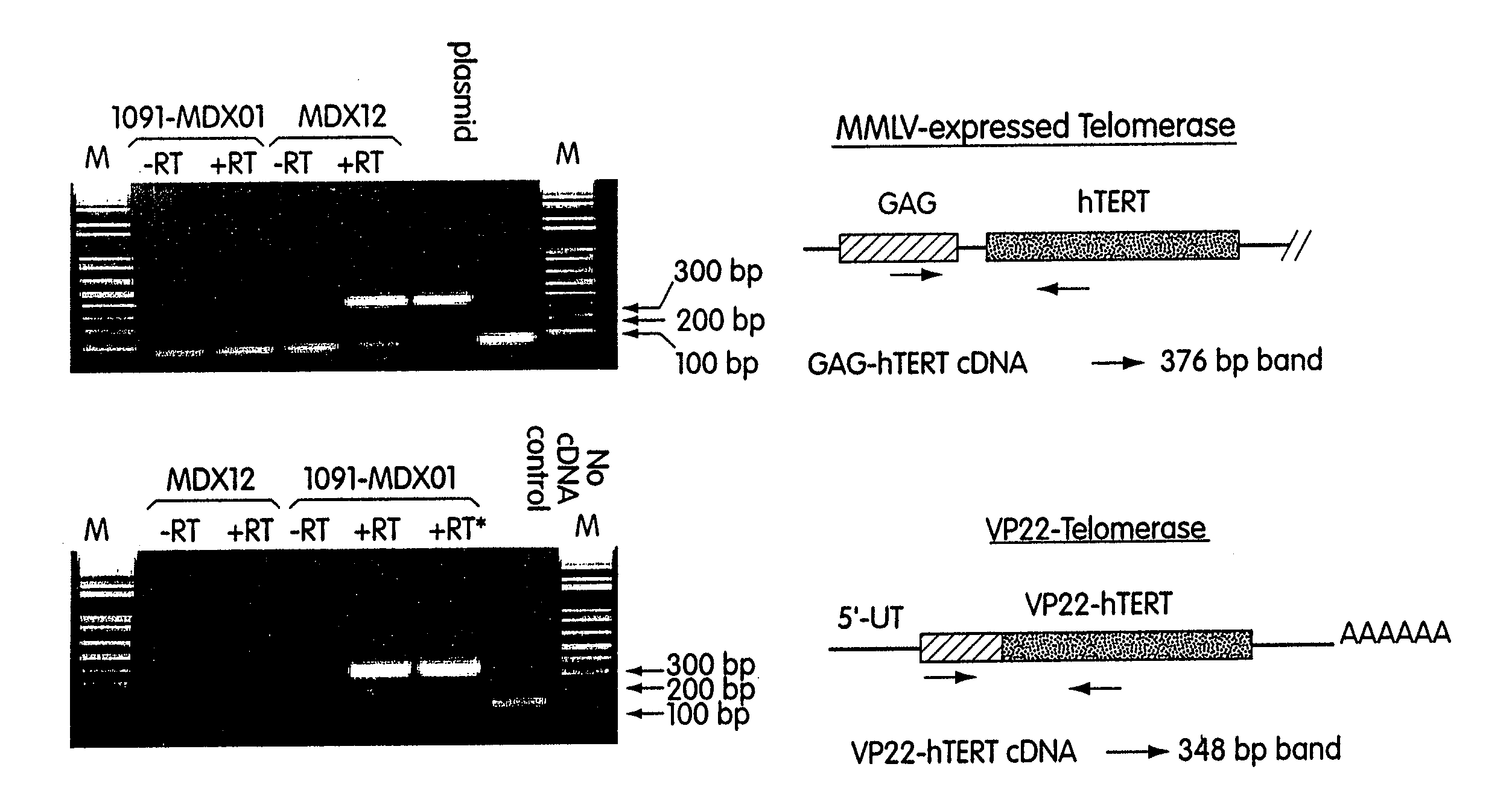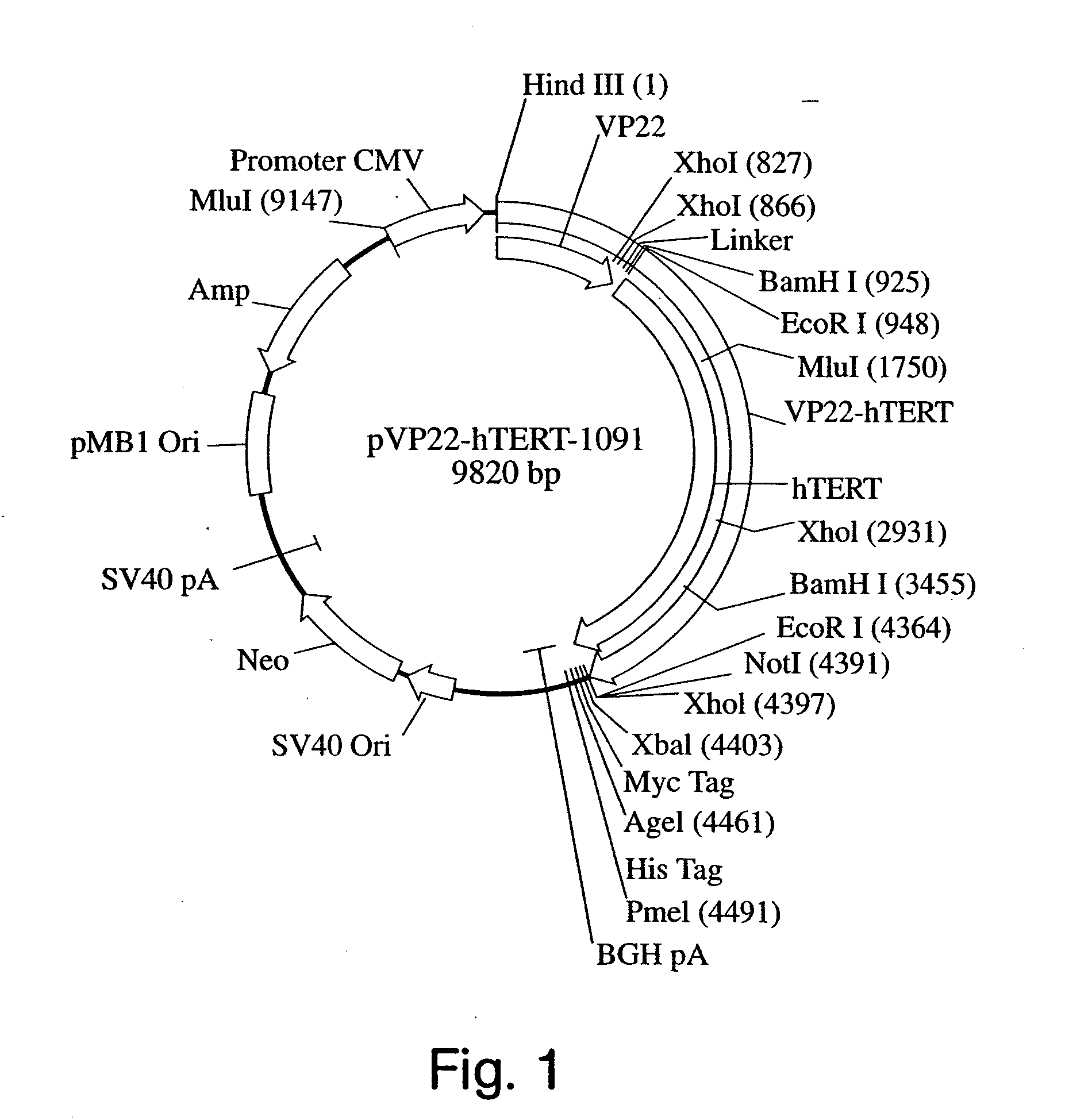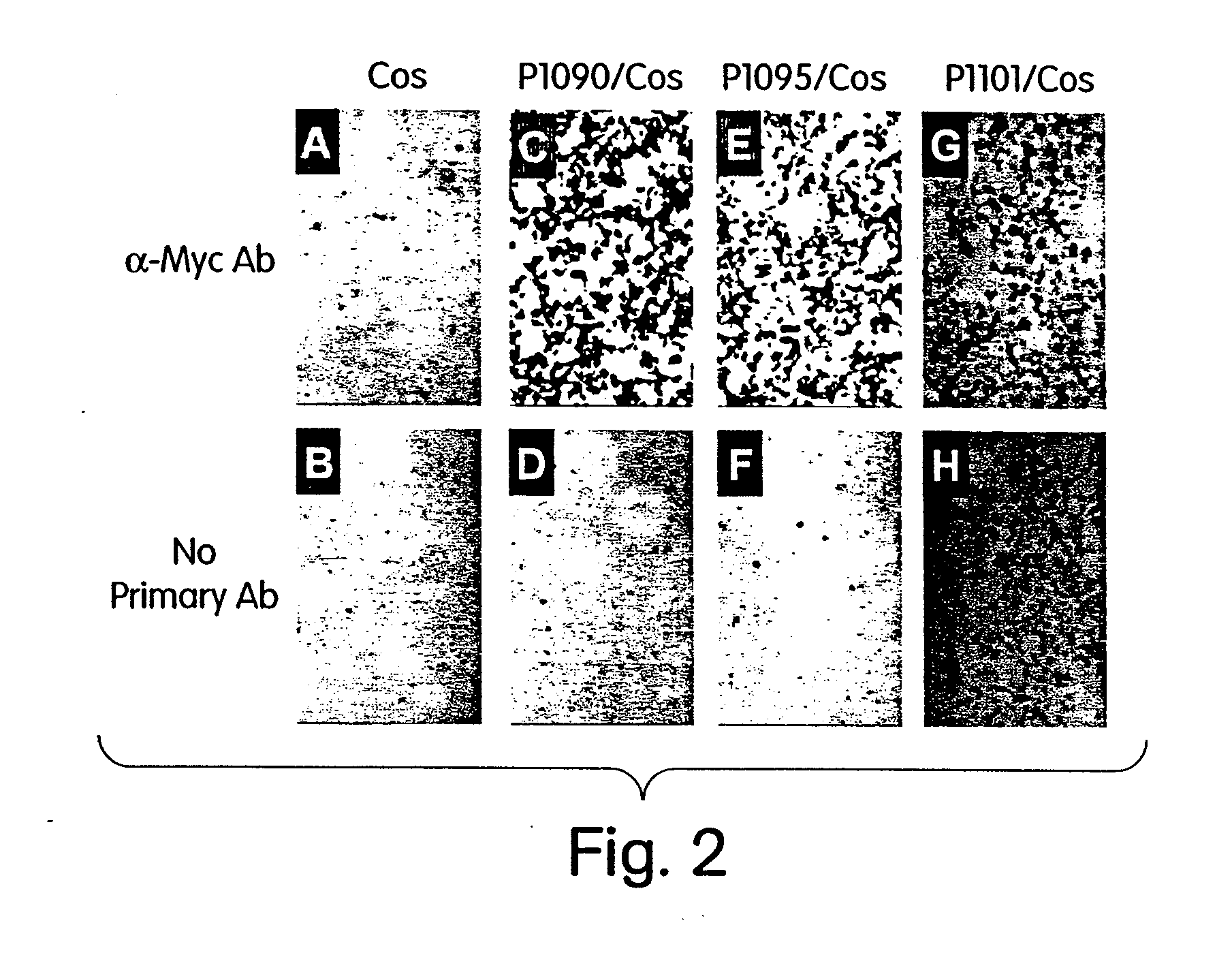Transiently immortalized cells for use in gene therapy
a technology of immortalized cells and gene therapy, applied in the field of tissue transplantation, can solve the problems of use of immortalized cells in cell therapy, and serious risks for patients, and achieve the effect of efficient and rapid reversion of expanding cells
- Summary
- Abstract
- Description
- Claims
- Application Information
AI Technical Summary
Benefits of technology
Problems solved by technology
Method used
Image
Examples
example 1
Construction of the VP22-hTERT Fusion
[0090] Materials. Taq polymerase and all restriction, modifying, and enzymes were purchased from Life-Technologies (Basel, Switzerland). The expression vector pCEP4, TA- and Cloning kits were obtained from Invitrogen Corporation (Carlsbad, Calif., U.S.A.). The Quick-Clone CDNA from human testis, lymphoma and HeLa cells, GC-Melt Genomic and cDNA PCR kits were purchased from ClonTech (Basel, Switzerland). The TRAPeze assay kit was obtained from Oncor (Basel, Switzerland).
[0091] Oligonucleotides. The following oligonucleotides were custom synthesized (Life-Technologies or Microsynth) for use as PCR primers in the cloning of the hTERT cDNA: 5′-ATATATGCTAGCGCCACCATGCCGCGCGCTCCCCGCTGCC-3′ (SEQ ID NO: 1). 5′-ATATATGAATTCAGTCCAGGATGGTCTTGAAGTCTGAGGGC-3′ (SEQ ID NO: 2).
[0092] RT-PCR amplification of 293T CDNA using Taq polymerase with these primers produced a 3417 base-pair product. Diagnostic restriction digestion patterns confirmed that this 3417-bp ...
example 2
Transient Immortalization Technology
[0097] The goal of this EXAMPLE is to validate the feasibility of chimeric protein translocation systems for the transient immortalization of primary human cells.
[0098] Construction of VP22-hTERT Fusion Cassettes and Expression Vectors. The basic VP22 expression vector was purchased from Invitrogen and renamed as pVP22-(cMyc-HIS-TAG)-1091. The cMyc and HIS denote the cMyc-tags and HIS-tags that are fused at the C-terminus of the VP22. The first gene to be fused to the VP22 was chosen to be the hTERT that was used successfully to enhance the proliferative potential of the primary human fibroblasts. Due to the concern that the C-terminal tags might interfere the hTERT catalytic activity, it was decided to make two VP22-hTERT fusion cassettes: (1) VP22-hTERT contains an in-frame fusion between VP22 and hTERT with no cMyc and HIS tags at the C-terminus of the fusion protein and (2) VP22-hTERT(cMyc-HIS-TAG) contains an in-frame fusion between VP22 an...
PUM
| Property | Measurement | Unit |
|---|---|---|
| Transport properties | aaaaa | aaaaa |
Abstract
Description
Claims
Application Information
 Login to View More
Login to View More - R&D
- Intellectual Property
- Life Sciences
- Materials
- Tech Scout
- Unparalleled Data Quality
- Higher Quality Content
- 60% Fewer Hallucinations
Browse by: Latest US Patents, China's latest patents, Technical Efficacy Thesaurus, Application Domain, Technology Topic, Popular Technical Reports.
© 2025 PatSnap. All rights reserved.Legal|Privacy policy|Modern Slavery Act Transparency Statement|Sitemap|About US| Contact US: help@patsnap.com



